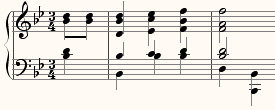I have sometimes used this space to complain about brilliant music books that have been allowed to go quickly out of print. This month, one of the best, perhaps the most brilliant music book written next to Charles Rosen’s The Classical Style, has just come back into print: The Apollonian Clockwork by Louis Andriessen and Elmer Schönberger. Amsterdam University Press is reissuing it, officially this month. The astounding thing about the book is that, like Stravinsky’s music itself, it is circuitous, unsystematic, unconcerned with completeness or consistency, a continuously inspired array of intellectual bric-a-brac. The essays are a potpourri of odds and ends. One explains why Stravinsky was the only mid-century composer whom no one could get away with imitating; another why Stravinsky’s melodies are impossible to memorize; another, “The Utopian Unison,” why his music is filled with false parallelisms; 
another details the incident in which Stravinsky was arrested by the Boston police for the unconventional major seventh chord in his arrangement of the “Star-Spangled Banner,” illustrated with a reproduction of Stravinsky’s mug shot; another explains why Stravinsky didn’t subscribe to the aesthetics of his own Poétique musicale; another describes finding the piano on which the Rite of Spring was composed; another researches the 17th-century dance steps on which Agon is based; another offers an insightful point-by-point comparison of Stravinsky and Schoenberg. Andriessen and Schönberger can say things like:
Requiem Canticles is the Requiem for the Requiem. After that, every composer who writes a liturgical requiem for large choir and orchestra, perferably in his old age, will seem like a taxidermist. He will be stuffing a skeleton with ersatz meat and then be putting a black hat on top of it. Then he will say: here is a man. But he will be wrong. It is no longer possible. Stravinsky’s Requiem Canticles is Berlioz’s Grande Messe des morts, shrivelled to an aphorism.
And again:
It is particularly because the late sonatas of Scriabin and the Sacre sound so different that it is interesting to look at their similarities. The ear easily passes over them. They are structural similarities. The glowing lava of Scriabin has solidified into the pumice of Stravinsky. Harmony, the clearest manifestation of the kinship, has coagulated…. The bars from Scriabin’s Etude, Op. 65 No. 3, form the same chord that dominates the last page of the Sacre.
If you have any abiding interest in 20th-century music, buy this book and read it at once. If music as culture means anything to you, buy this book. It made so little splash the first time around that I’ve hardly run into anyone who’s aware of it. But any composer living would give his left arm to be assured that so witty, wise, creative, simpatico, and insightful a book would be written about him after his death. Richard Taruskin has aptly called it “The one book about Stravinsky Stravinsky would have liked.” And, thanks to an editorial miracle, it has reappeared after some 15 years’ unforgivable absence.
